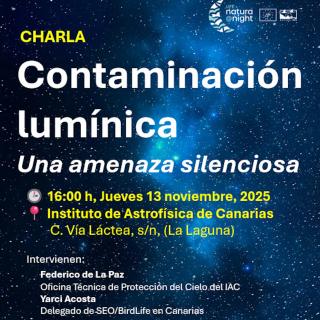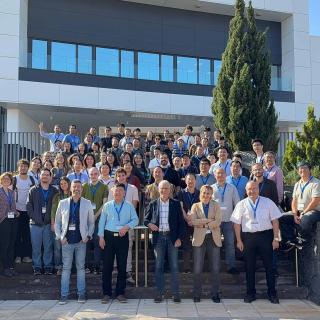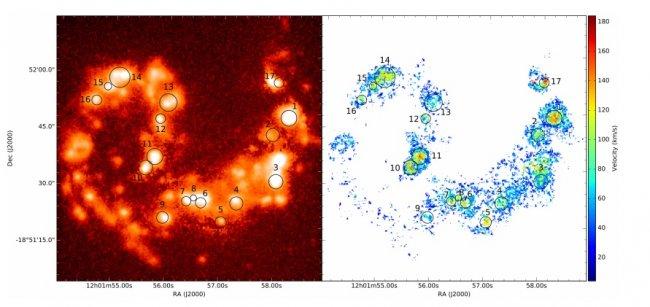It may interest you
-
 Especialistas abordarán el impacto de la iluminación artificial excesiva y sus efectos sobre la astronomía, la salud humana y la biodiversidad El Instituto de Astrofísica de Canarias (IAC) y SEO/BirdLife Canarias celebran la conferencia " Contaminación Lumínica: Una Amenaza Silenciosa", una jornada clave para la protección del medio ambiente y el patrimonio científico del archipiélago. La ponencia estará a cargo de Federico de la Paz, técnico del IAC, y Yarci Acosta de Seo/Birdlife, quien desgranará los graves riesgos que el uso ineficiente y descontrolado de la luz artificial supone para laAdvertised on
Especialistas abordarán el impacto de la iluminación artificial excesiva y sus efectos sobre la astronomía, la salud humana y la biodiversidad El Instituto de Astrofísica de Canarias (IAC) y SEO/BirdLife Canarias celebran la conferencia " Contaminación Lumínica: Una Amenaza Silenciosa", una jornada clave para la protección del medio ambiente y el patrimonio científico del archipiélago. La ponencia estará a cargo de Federico de la Paz, técnico del IAC, y Yarci Acosta de Seo/Birdlife, quien desgranará los graves riesgos que el uso ineficiente y descontrolado de la luz artificial supone para laAdvertised on -
 Researchers from around the world are taking part in the China–Spain Astronomical Collaboration on High-Resolution Spectroscopy 2025, an event organised by the Instituto de Astrofísica de Canarias (IAC) in collaboration with the National Astronomical Observatories of China (NAOC), the Nanjing Institute of Astronomical Optics & Technology (NIAOT), and the Gran Telescopio Canarias (GTC) team. The aim of the conference is to strengthen and consolidate scientific cooperation between China and Spain in the field of high-resolution spectroscopy, one of the key areas for studying stars, galaxiesAdvertised on
Researchers from around the world are taking part in the China–Spain Astronomical Collaboration on High-Resolution Spectroscopy 2025, an event organised by the Instituto de Astrofísica de Canarias (IAC) in collaboration with the National Astronomical Observatories of China (NAOC), the Nanjing Institute of Astronomical Optics & Technology (NIAOT), and the Gran Telescopio Canarias (GTC) team. The aim of the conference is to strengthen and consolidate scientific cooperation between China and Spain in the field of high-resolution spectroscopy, one of the key areas for studying stars, galaxiesAdvertised on -
 This is the third “mini-Moon” with lunar-like material identified as part of the Arjuna asteroid belt, where objects follow similar orbits around the Sun to that of the Earth-Moon system. IAC, February 6, 2025. – Near-Earth asteroid 2024 PT5 orbits around the Sun following a trajectory very similar to that of the Earth-Moon system, and during two months of 2024, it accompained our Earth on its journey. This asteroid has material on its surface that was originated in the Moon, as it has been proved by a research led by the Insituto de Astrofísica de Canarias (IAC) and the UniversidadAdvertised on
This is the third “mini-Moon” with lunar-like material identified as part of the Arjuna asteroid belt, where objects follow similar orbits around the Sun to that of the Earth-Moon system. IAC, February 6, 2025. – Near-Earth asteroid 2024 PT5 orbits around the Sun following a trajectory very similar to that of the Earth-Moon system, and during two months of 2024, it accompained our Earth on its journey. This asteroid has material on its surface that was originated in the Moon, as it has been proved by a research led by the Insituto de Astrofísica de Canarias (IAC) and the UniversidadAdvertised on
